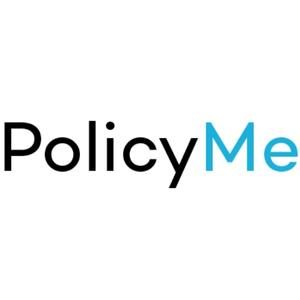One of the key differences between investing from within the US and within Canada is the difference in tax-advantaged accounts.
Canada does not have Roth IRAs but does make Tax-Free Savings Accounts (TFSA) available to investors. Although there are many differences between a US Roth IRA and a TFSA, it is the most comparable account type available for investing within Canada.
As of the beginning of 2022, 63% of Canadians had an open Tax-Free Savings Account.
I will go over the equivalent of a Roth IRA in Canada and outline how the two different account types compare in functionality.
Roth IRA: Specific Features in the US
A Roth IRA is a tax-advantaged account that is available in the US. It allows you to contribute after-tax dollars to invest.
The money that is invested in a Roth IRA account grows tax-free and can be withdrawn without paying taxes after age 59 and six months. In order to withdraw money on a tax-free basis, the account must have been open for at least five years.
There are no age restrictions for contributing to a Roth IRA as long as an investor has qualifying earned income. Roth IRA accounts can be passed on to heirs who can then withdraw money from the account without paying taxes. A Roth IRA account does not have mandatory minimum withdrawals (unlike a traditional IRA).
Early withdrawals from a Roth IRA can be made for quite a few purposes, including:
- Higher education expenses
- First home purchase
- Medical expenses or disability claims
- Health insurance
- Reservist distributions
A Roth IRA can hold a wide variety of investments and assets.
Individuals that have very high annual incomes may not be eligible to contribute to a Roth IRA. An individual’s Modified Adjusted Gross Income (MAGI) needed to be under $140,000 for the 2021 tax year and under $144,000 for the 2022 tax year in order to be able to contribute to a Roth IRA.
Married individuals who file taxes jointly needed a MAGI of under $208,000 for the 2021 tax year and under $214,000 for the 2022 tax year.
Tax-Free Savings Accounts: Features in Canada

A Tax-Free Savings Account (or TFSA) is a registered account type here in Canada available to Canadian residents. It allows investors to contribute after-tax money to the account and grow it on a tax-free basis.
There is a limit to how much money can be deposited within a TFSA account. The government of Canada outlines a specific contribution room each year (since the account’s introduction in 2009), and you can contribute the full accumulated account to one or multiple TFSA accounts.
If you were over the age of 19 before 2009 and haven’t contributed to a TFSA, you will have a total contribution room of $88,000 since the account’s inception. Otherwise, you will have started accumulating contribution room starting at age 18 (if this is after 2009).
Although you can hold a very wide range of investments within a TFSA, these must be considered qualified investments.
The amount of money that can be contributed to a TFSA at any time takes into consideration:
- The annual dollar limit
- Your unused contribution room that is carried forward
- Any withdrawals or re-contributions made in past years
Money can be taken out of a TFSA at any time without any tax penalties. Money that is taken out is added back to your contribution room, although you will have to wait until the next calendar year.
You have to be extremely careful to not over contribute to a Tax-Free Savings Account. Over-contributed amounts are charged with a 1% per month penalty, imposed by the Canadian Revenue Agency.
Similarities between a Roth IRA and a TFSA

Although the Roth IRA and the TFSA are not identical accounts, they are fairly similar in nature. Both accounts are government plans that are designed to encourage investment through the substantial potential tax savings that they offer.
Additional similarities between the two account types include:
- Similar annual contribution room
- Contributions to both types of accounts are not tax deductible
- Investors do not pay any taxes on withdrawals from both TFSAs and Roth IRAs as long as specific criteria are met
- Both accounts can hold a wide range of investments, including cash, stocks, bonds, and funds
Both the Roth IRA and the TFSA are considered tax-exempt accounts. Tax-exempt accounts (which allow you to avoid taxes on growth within the account) can save investors a huge amount in taxes, especially over the long term.
The combination of aggressive investments and a long-term investment time horizon can lead to very large gains after a few decades. Taking advantage of a Roth IRA or a TFSA in order to shelter these gains from taxes can be an invaluable way to grow your wealth.
Differences between a Roth IRA and a TFSA

TFSAs and Roth IRAs come with significant differences that you should be aware of. These include:
- You are able to carry forward unused contribution room for a TFSA but not for a Roth IRA
- A TFSA allows you to contribute any sort of savings, while a Roth IRA only allows you to contribute earned income to the account.
- Roth IRAs may disqualify you from contributing if your income is too high, while the TFSA is unaffected by your income level.
- Roth IRAs provide increases in contribution room once you hit a certain age (50) while TFSAs do not.
- TFSAs allow for more flexibility in terms of withdrawing money from the account while Roth IRAs require certain criteria to be met.
Frequently Asked Questions
Can a Roth IRA be Transferred to a TFSA?
A Roth IRA can’t be transferred to a TFSA if you are planning to move to Canada from the US. You will be able to open a TFSA account once you become a Canadian resident, although you have to be careful of the tax consequences on the US side.
You will have to do a lot of tax research if you are planning to move between the two countries. Making mistakes with either TFSA accounts or Roth IRAs can lead to substantial taxation problems in Canada and/or in the US.
What is an IRA in Canada?
IRAs, standing for individual retirement accounts, are tax-advantaged accounts in the US. In Canada, tax-advantaged accounts are referred to as registered accounts.
Roth 401k in Canada?
A Roth 401k account in the US is an employer-sponsored account that allows you to save for retirement using after-tax dollars. A similar type of employer plan in Canada is called a group Tax-Free Savings Account.
Roth IRA vs RRSP?
The main difference between a Roth IRA and an RRSP is that a Roth IRA is a tax-exempt account, while an RRSP is a tax-deferred account. Contributions to a Roth IRA are made from after-tax income and withdrawals are not taxed if specific criteria are met.
Contributions to a Canadian RRSP are made from pre-tax income, usually allowing for large account sizes. Money within an RRSP account grows free of taxes but is taxed as income once it is withdrawn (at an investor’s marginal tax rate).
What Happens to a Canadian Inheriting a Roth IRA?
A Canadian that inherits a Roth IRA (perhaps from a relative) has to take significant precautions. Be sure to consult a cross-border tax specialist for specific advice in this situation.
How to Manage Accounts in Both Canada and the US?
If you have both Canadian and US investment or retirement accounts, it may be confusing to keep track of everything. It is also important to make sure that you don’t make any mistakes for tax purposes, as you may end up paying unnecessary taxes in one country or another.
If you are thinking of working with a financial or investment advisor, be aware that advisors exist that are cross-border licensed. These advisors are licensed to manage investments both in the US and in Canada and may be able to help with financial planning, tax planning, and estate planning between the two countries.
Keep in mind that working with an advisor using comes with very high advisory fees.
Conclusion
Individuals that are looking to have retirement accounts in both Canada and the US have to be extremely careful around procedures and should avoid paying unnecessary taxes where possible. Roth IRA accounts from the US cannot be transferred to a Tax-Free Savings Account in Canada.
Despite the Canadian TFSA being fairly similar to the Roth IRA, substantial differences exist.
For Roth IRAs, these are mainly in the form of additional withdrawal requirements, being unable to carry unused contribution room forward, and requiring yearly income to be below a yearly maximum in order to be able to contribute.
Although working with an advisor is generally very expensive, cross-border licensed advisors may be able to significantly help with planning and wealth management in Canada and the US.
If you are starting to think about retiring in Canada, make sure to read my comprehensive guide on retirement planning in Canada.




